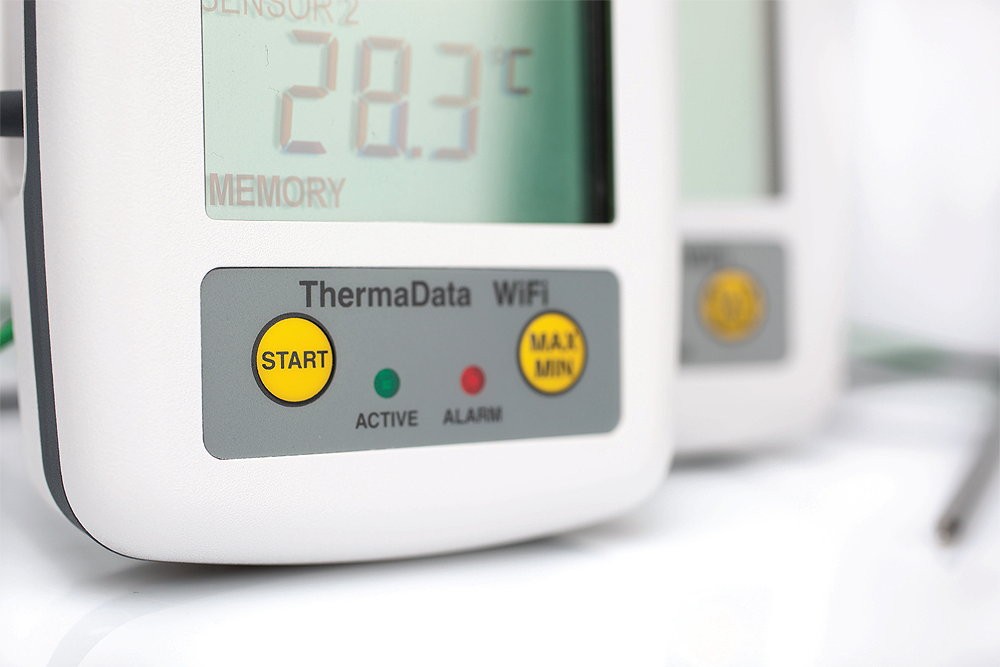
Taking care
Food safety has been propelled up the agenda since the pandemic began. From the very real threat of mass surplus food going to waste as food and drink service providers were forced to shut their doors, to ensuring food has met safety standards whilst in transit as these businesses adapt to delivery to meet consumer demand.
Domestically, we saw families stockpiling food items bringing the issue of food waste and safety directly into households across the UK. However, what we call ‘farm to fork’ has been in overdrive since the pandemic began. People have been looking to replicate the meals and experiences that they have been missing from restaurants whilst at home and in doing so, have been taking the issue of food safety seriously.
But what of supermarkets? With the onset of Covid-19 and subsequent lockdowns, they have been inundated with click-and-collect orders and home deliveries. This places further emphasis on food safety best practice and increases the pressure on supermarket workers. Not only do they have to ensure that they maintain proper food temperature ranges throughout storage, picking and delivery, but now their own sanitation and personal hygiene is also being placed under greater scrutiny. Cross-contamination is one of the leading risk factors when it comes to food-related illnesses. Keeping food safe and avoiding costly product recalls requires a rigorous temperature monitoring system, which can be made more efficient with the right technology.
Refrigeration risk factors
Maintaining safe cooling and refrigeration temperatures is challenging during ordinary times, but what happens during periods of consistent high demand, as has been the case since the pandemic began? Supermarkets and their staff have been under enormous strain and it has demonstrated that any deviation from the norm can have an impact on food storage.
Overfilling refrigerators and cool rooms with produce reduces the air flow and leads to hot spots, where bacteria can flourish even if you think you have the right temperature set on the dial. To combat this, an inventory of how much stock needs to be refrigerated should be kept.
Real time temperature monitoring streamlines processes and procedures enabling all catering facilities, from supermarkets to independent cafes, to act immediately should any unforeseen issues arise. Wireless data loggers transmit data via the cloud which is stored locally on PCs and other devices. This means the user can access real, live temperature monitoring data wherever they are saving tremendous time and, in turn, money.
They can track live temperature recordings so that refrigeration and freezers don’t go above critical limits. Monitoring both air and core temperature in refrigeration units allows organizations to install early alert systems ensuring they stay one step ahead. This also ensures more accurate food temperature controls which improves safety and reduces food spoilage.
Not only do wireless data loggers provide live data as and when something goes wrong, but they also support social distancing measures by reducing the number of people involved in the temperature monitoring process and limiting human to human contact. This also eliminates human errors and reduces the risk of cross-contamination.
The application of HACCP principles across supermarkets
Legislation dictates that within the food supply process certain operations should be conducted within legally set temperature parameters. Therefore, the ability to measure temperature across different elements of the process is essential. This will be dictated by a Hazard Analysis and Critical Control Points (HACCP) plan and may include temperatures relating to delivery, pre-cooking storage, or re-heating. Any food handlers should be well-informed and suitable measures should be put in place to protect a brand, business, staff, and customers.
Supermarkets are required to follow the same food safety procedures just as restaurants and other food and drink service providers. Stores can apply the same safety principles based on HACCP as the food processing industry, adapted for varied conditions and production.
HACCP principles are applied to protect food from biological, physical and chemical food safety hazards by applying controls that prevent direct contamination and cross-contamination. Hazards can be introduced anywhere in the supply chain from production on farm, to transport, and during storage and processing in the retail store. Raw animal products such as meat, eggs, fish and shellfish, and especially poultry, can carry microorganisms that are harmful to the consumer. In store, surfaces and equipment possess additional hazards to the food.
Supermarkets and other food and drink services providers have introduced proactive steps across catering operations to ensure business continuity and to keep people safe from health and safety dangers. But they recognize that everything is against the clock when it comes to perishable goods, and wireless data loggers have stood up to the challenge of keeping refrigeration temperatures steady.
The pandemic has shown us how exemplary the food supply chain is, as it adapts at each and every turn to help prevent a food waste catastrophe. The UK should be proud that is has such a robust and responsive food system. Food temperature monitoring will continue to be one of the hidden heroes supporting these facilities throughout the remainder of and beyond Covid-19.
Electronic Temperature Instruments (ETI)
Jason Webb is director, Electronic Temperature Instruments (ETI) the UK’s largest digital thermometer manufacturer and exporter of electronic thermometers and temperature probes. A privately-owned company founded in 1983 by Peter and Miriam Webb, ETI employs over 170 staff across three company owned factories in Worthing, West Sussex. The company has been presented with four Queen’s Awards, most recently in 2018 the Queen’s Award for Enterprise for Innovation. ETI also supplies thermometers to other industrial sectors including construction, healthcare, scientific laboratories, HVAC and refrigeration.
For further information, please visit: https://thermometer.co.uk